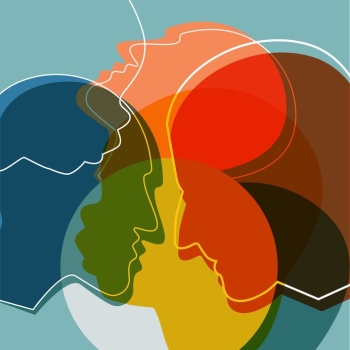
Center for Growth / Personality Disorder Treatment in Philadelphia
Our personality is a collection of unique behaviors, character traits, beliefs, and attitudes that make up who we are as a person. How we view the world, interact with others, process events, and share feelings are some of ways in which we express our personality. Personality development comes from a combination of influential people in our childhood and adolescence, life experiences, genetics, and our environment. For most people, their personality will develop in line with what society expects; and thus it allow them to experience and interact with the world, have nurturing and long lasting relationships, and experience life’s ups and downs while knowing things will generally turn out ok. However; due to some combination of genetics, environment, and childhood experiences, some people’s personalities do not develop normally and they have great difficulty in managing relationships and day-to-day life (Butcher, Mineka, & Hooley, 2008). This tip is designed to help you understand how a personality disorder is diagnosed via the DSM-IV-TR, and identify some of the common thoughts, feelings, and behaviors associated with a personality disorder.
According to the Diagnostic and statistical Manual of Mental Disorders, which is used to diagnose psychological disorders such a depression, anxiety, autism, and many others; a personality disorder is a psychological disorder that is marked by a long-standing pattern of thoughts, feelings, and behaviors, that are intensely different than what is expected based upon the person’s cultural norms (DSM–IV–TR (2000) 4th ed., text rev.). A mental health professional will use The DSM-IV-TR criteria as a guideline to assess a person’s function to see if he or she meets the requirements for a diagnosis of a personality disorder. Criteria A is: “An enduring pattern of inner experience and behavior that deviates markedly from the expectations of the individual’s culture. This pattern is manifested in two (or more) of the following areas: (1) cognition, (2) affectivity, (3) interpersonal functioning, or (4) impulse control.” Cognition is the ways in which a person perceives and interprets self, others, and events. Affectivity refers to the range, intensity, lability, and appropriateness of emotional response (DSM–IV–TR (2000) 4th ed., text rev.). This criteria means that people with a personality disorder will have a long term pattern of having trouble thinking about, relating to, and controlling their behavior in some social situations.
Criteria B from the DSM-IV-TR (2000) states: “The enduring pattern is inflexible and pervasive across a broad range of personal and social situations.” This means that the person will exhibit similar thoughts, feelings, and behaviors at home, work, school, or out with friends. It also means that people with a personality disorder have trouble learning from past “mistakes” and continue to behave the same way (Butcher et. al., 2008). Criteria C states: “The enduring pattern leads to clinically significant distress or impairment in social, occupational, or other important areas of functioning.” This criteria means that the person will have quite a bit of stress, anxiety, or depression as a result of their thoughts, feelings, and behaviors. Criteria D states: “The pattern is stable and of long duration and its onset can be traced back at least to adolescence or early adulthood.” Again this criterion is stating that this person has thought, felt, and behaved this way for a long time. It also means the person’s symptoms will begin to be noticeable around their teens and that a diagnosis of a personality disorder prior to adolescence is inappropriate (DSM–IV–TR (2000) 4th ed., text rev.). Criteria E states: “The enduring pattern is not better accounted for as a manifestation or consequence of another mental disorder.” And Criteria F states: “The enduring pattern is not due to the direct physiological effects of a substance (e.g., illegal drugs or prescription medications) or a general medical condition (e.g., head trauma) (DSM–IV–TR (2000) 4th ed., text rev.).” These last two criteria mean that thoughts, feelings, and behaviors associated primarily with other disorders in the DSM-IV-TR, medical conditions, or substance use can not be used to diagnose a personality disorder.
These elements, having intense and uncontrollable emotions, odd or inappropriate behaviors, and rigid thought processes are signs of someone having met criteria for a general personality disorder. In addition to meeting these criteria, people with personality disorders will be classified according to the specific types of thoughts, feelings, and behaviors they exhibit. There are 10 identified personality disorders, each with their own set of behaviors and symptoms. The 10 personality disorders are grouped into three “clusters” A, B, and C (DSM–IV–TR (2000) 4th ed., text rev.; and Butcher et. Al., 2008). People diagnosed with a cluster A personality disorder are often described as introverted, withdrawn, fearful of intimacy, untrusting, secretive, and eccentric. They will be likely to avoid interacting with other people because they find it difficult to relate. People diagnosed with a cluster B disorder will at times ignore the rules and norms of social behavior and conduct. They might seem impulsive, irresponsible, and insecure to others. They will appear to have a strong need for constant attention from others and may act out if they don’t get it. People diagnosed with a cluster C personality disorder will seem sensitive, timid, submissive, shy, and perfectionistic. They might be scared to talk to others or share their feelings due to intense fear of saying or doing the wrong thing. Friends and family might feel like these people require a lot of reassurance and at times feel unworthy of their love (DSM–IV–TR (2000) 4th ed., text rev.; and Butcher et. Al., 2008).
To recap, a personality disorder is a psychological disorder that has multiple symptoms including intense emotions, odd or eccentric behaviors, and rigid thoughts and feelings. People with a personality disorder view themselves and the world very differently than most people. Someone who has a personality disorder may find it difficult to relate to others, or be around people. Just as with people without a personality disorder diagnosis, there is a wide range of behaviors and emotions that are present in people with a personality disorder. There is also a wide range of severity of personality disorders. People with a milder form will generally function adequately in society but would be described as troublesome, eccentric, or hard to get to know by people who know them. Almost everyone diagnosed with a personality disorder will have some kind of trouble maintaining close relationships and effectively fulfilling the roles that society asks of them (Butcher et. Al., 2008). Symptoms of a Personality Disorder will usually develop around adolescence and are often times noticeable throughout a person’s life; however these symptoms can be treated and managed with therapy and/or medication. People diagnosed with a personality disorder are also likely to experience anxiety and depression due to their intense emotions and difficulty trying to relate to others (DSM–IV–TR (2000) 4th ed., text rev.; & Butcher et. Al., 2008).
A trained mental health professional such as a therapist, psychiatrist, or psychologist is needed to diagnose a personality disorder. The therapist will meet with the person over the course of weeks or months for an assessment, which may include personal reports, reports from significant members of the person’s life, a written assessment, and/or a report from the person’s doctor or psychiatrist. They will discuss the person’s social, interpersonal, work, school, home, and family functioning in order to determine if a diagnosis of a personality disorder is appropriate. From a clinical standpoint it’s helpful to remember that a diagnosis helps guide therapists toward which interventions to use. A diagnosis does not represent a judgment on the person and whether or not the therapist thinks he or she is a “bad” person. Individual and group therapy can help address the rigid thoughts and socially inappropriate behaviors associated with personality disorders; while medications can be helpful to control the intense emotions. For diagnosis of, therapy, or support with a personality disorder please contact us at Center for Growth / Personality Disorder Treatment in Philadelphia 267-324-9564
References
American Psychiatric Association. (2000). Diagnostic and Statistical Manual of Mental Disorders (4th ed., text rev.). Washington, DC: Author.
Butcher, J.N., Mineka, S., and Hooley, J.M. (2008). Abnormal Psychology: Core Concepts. Boston, MA: Pearson Education, Inc.






















